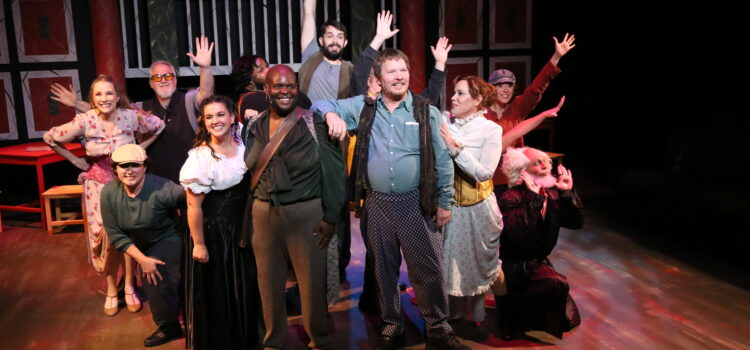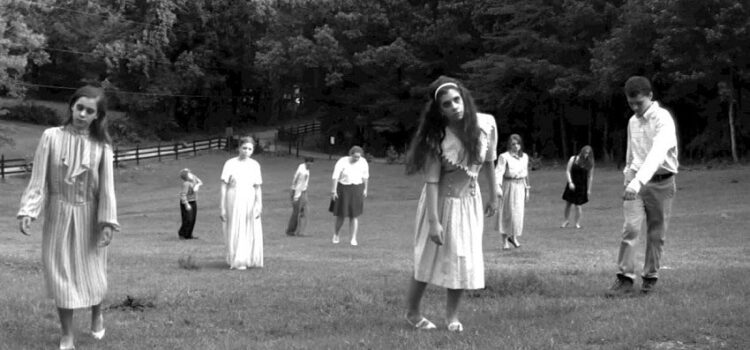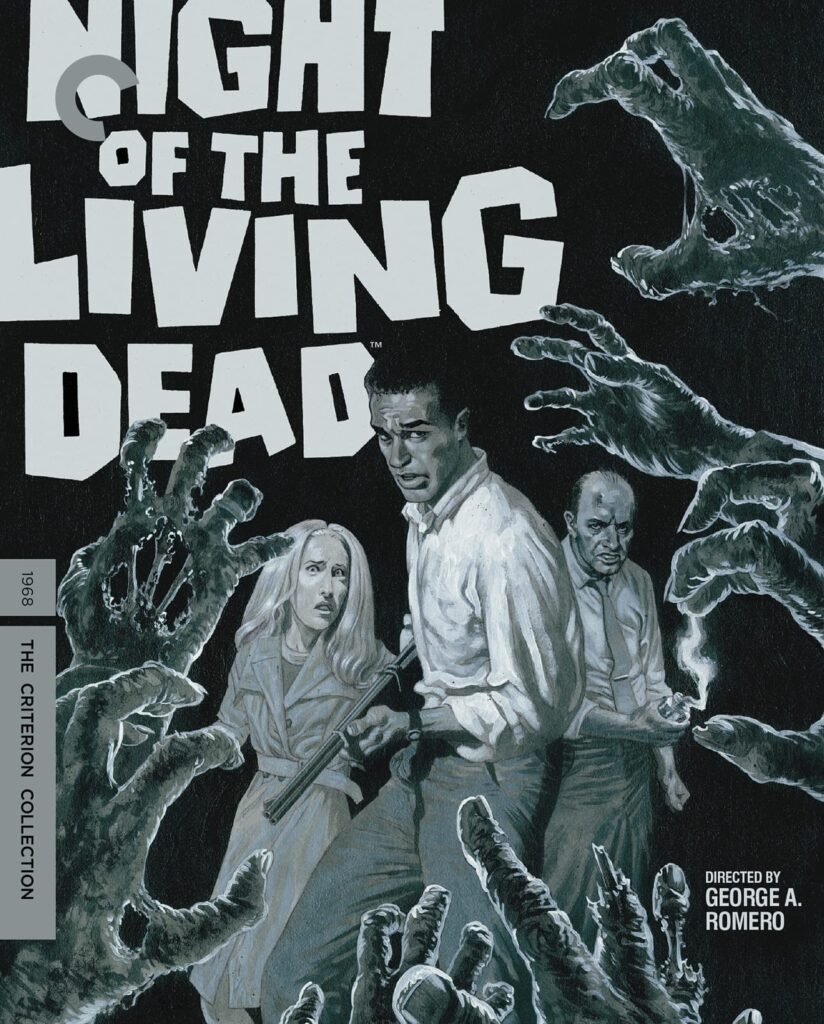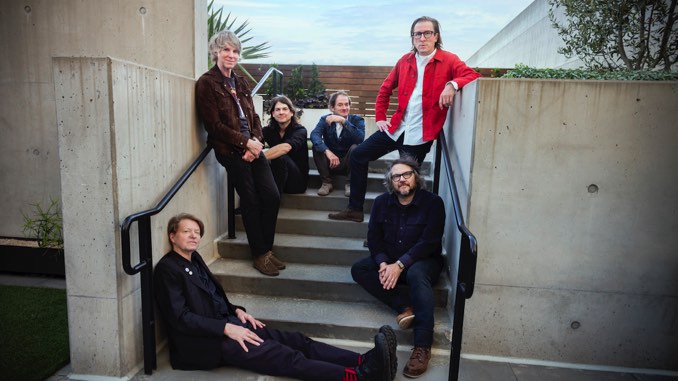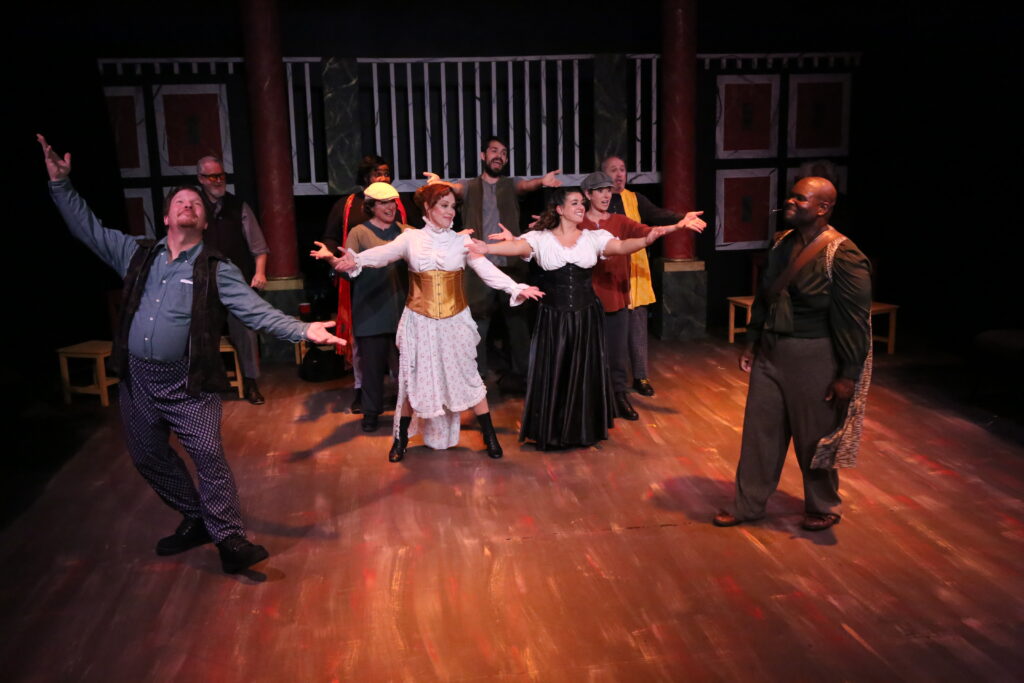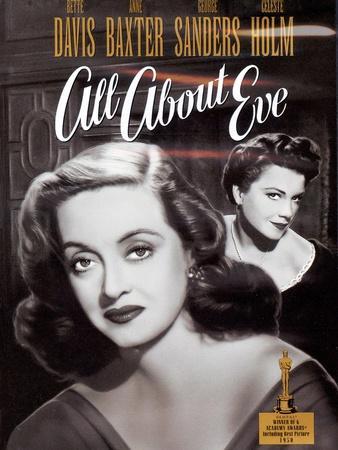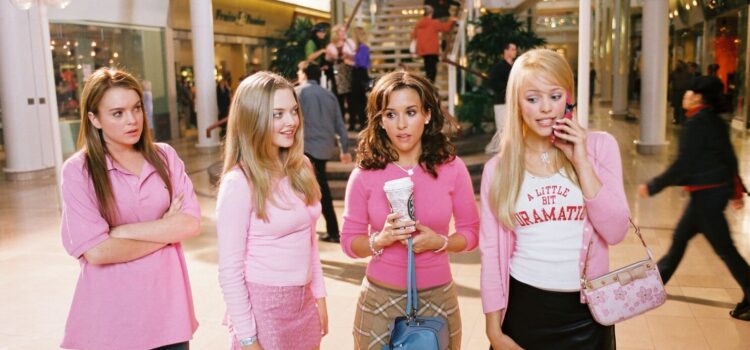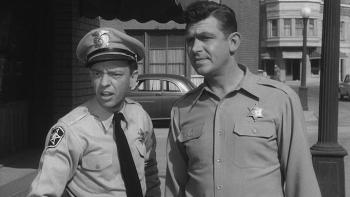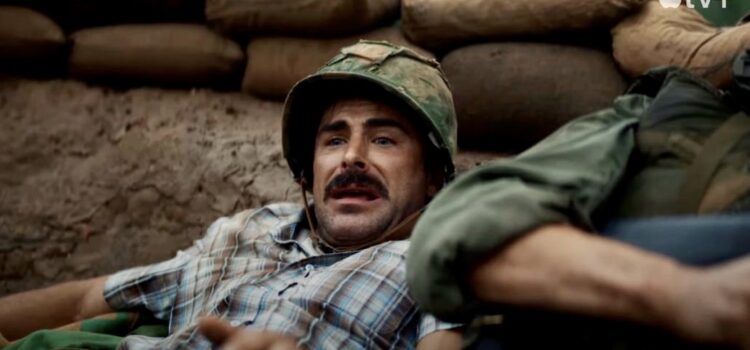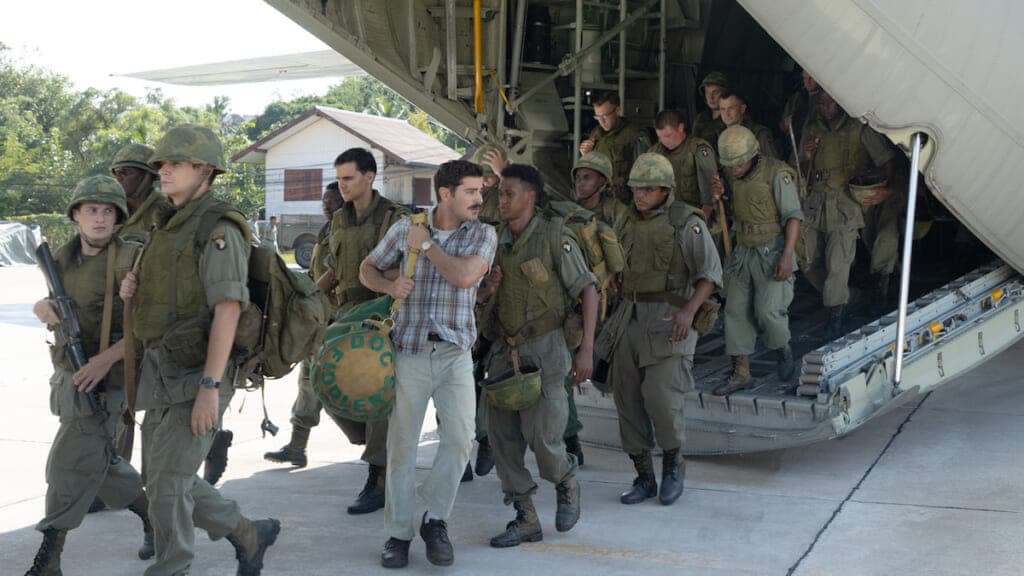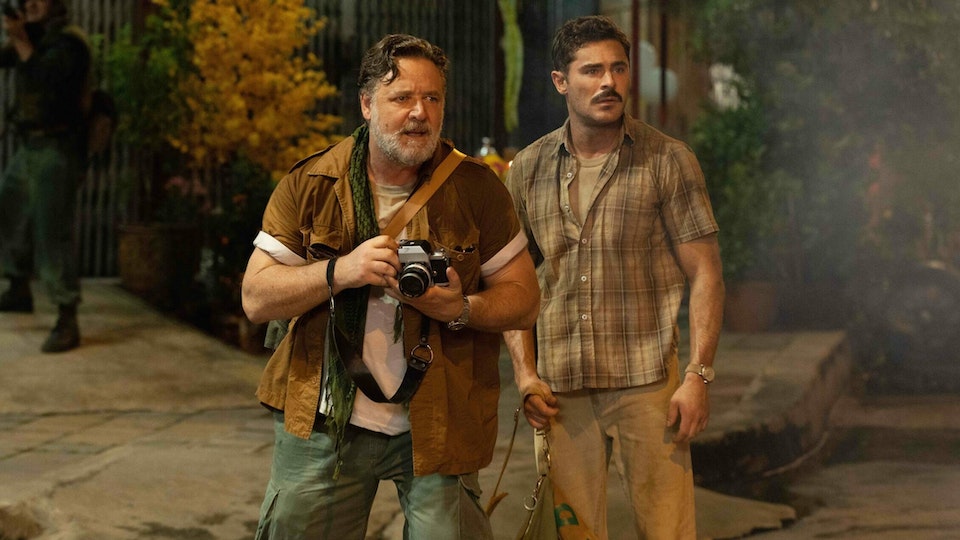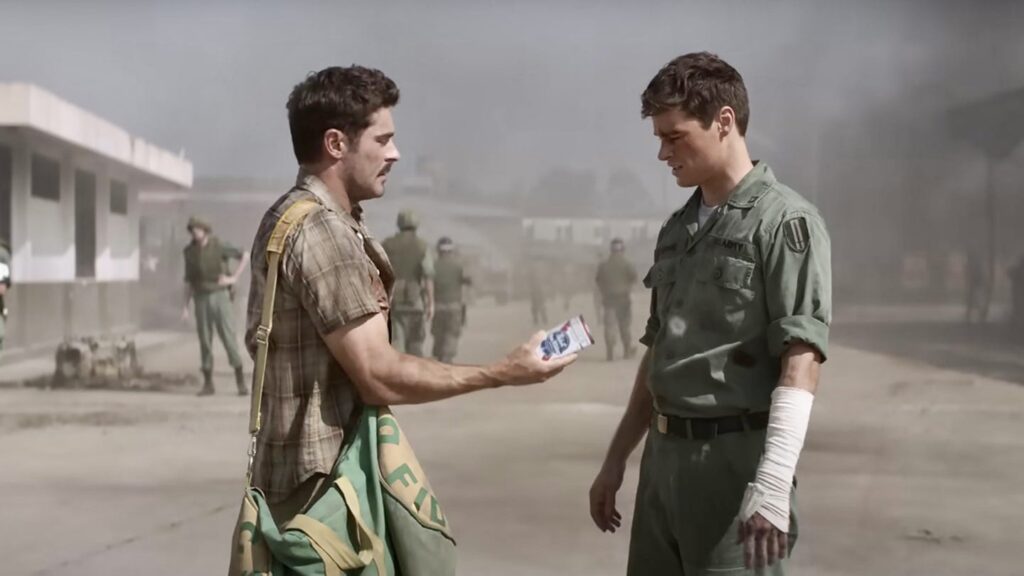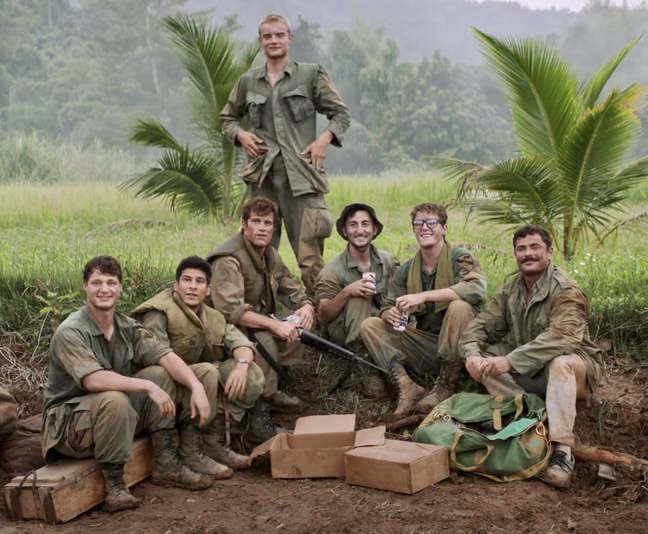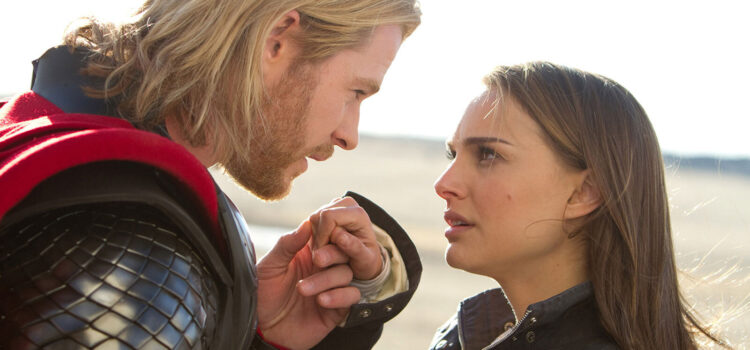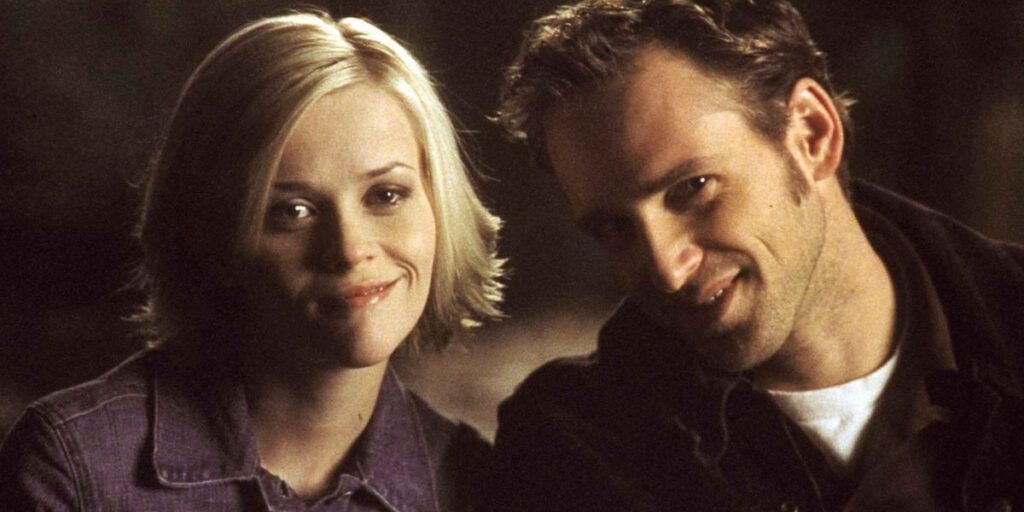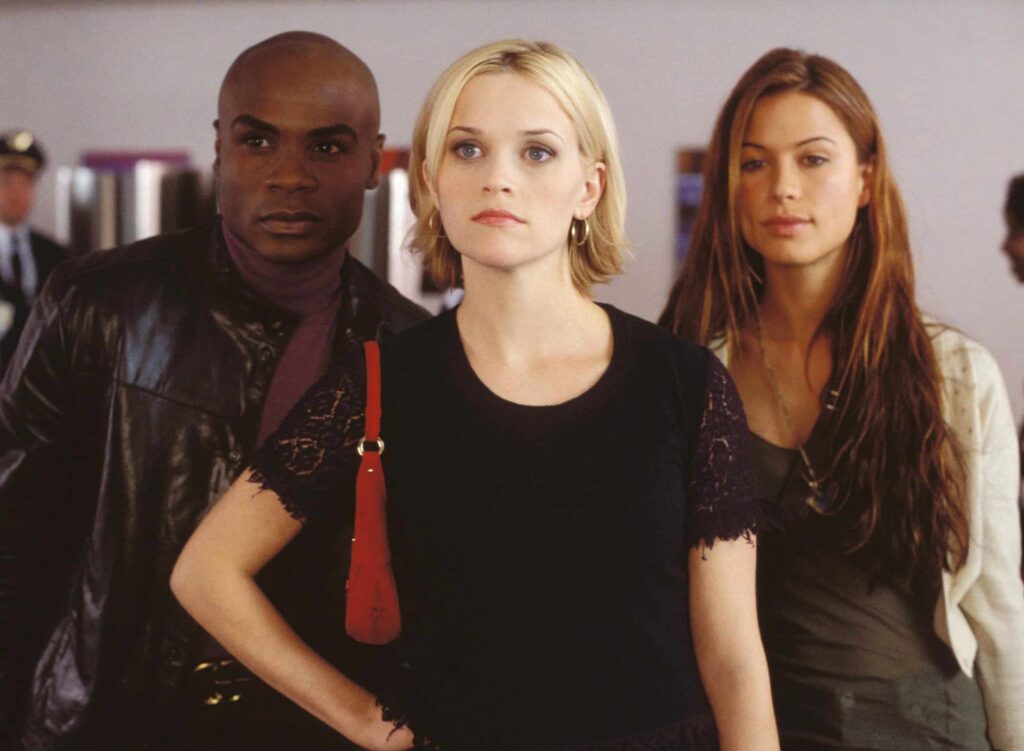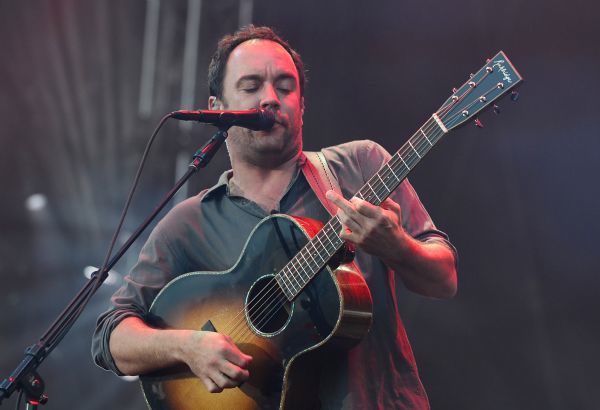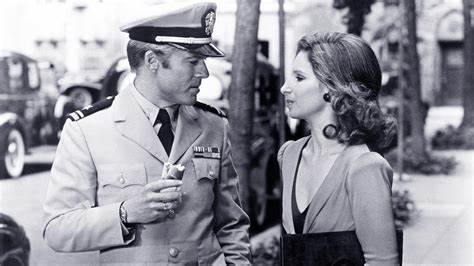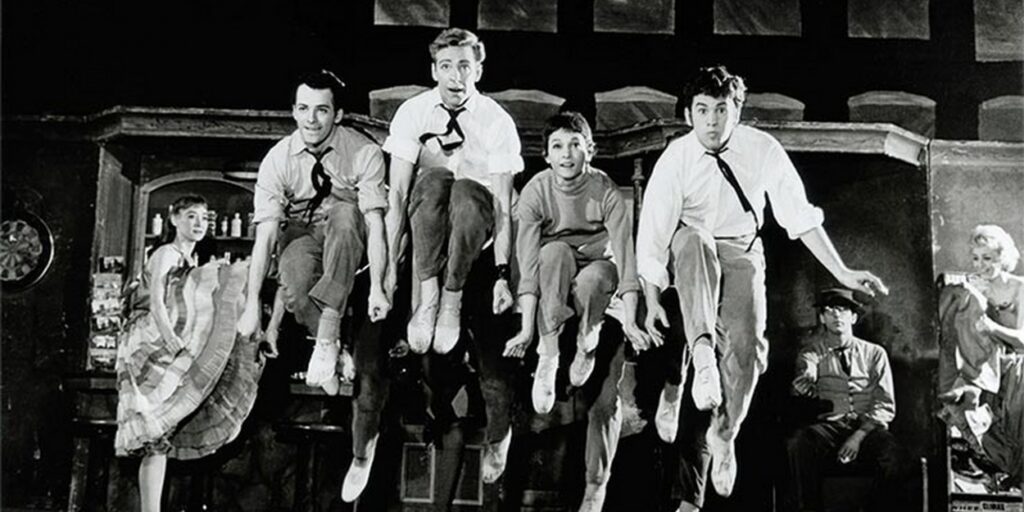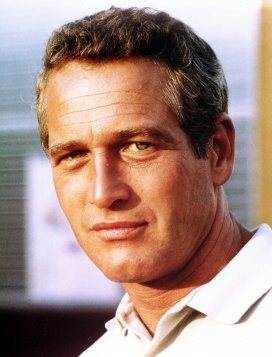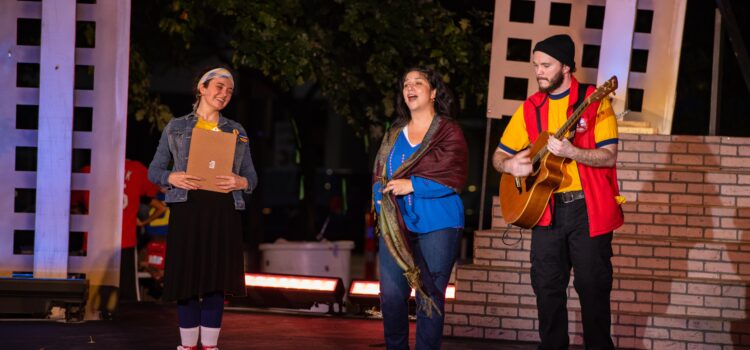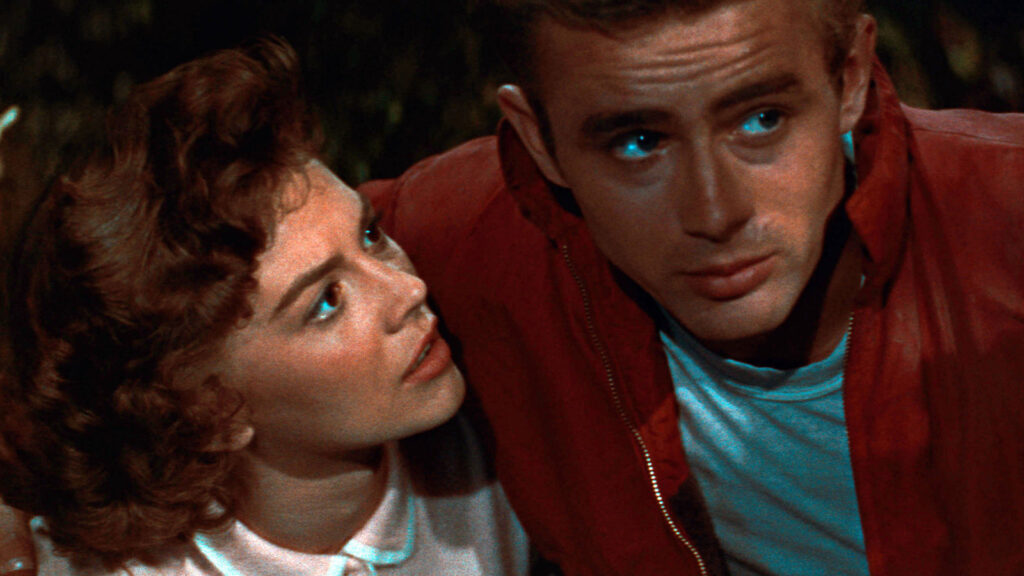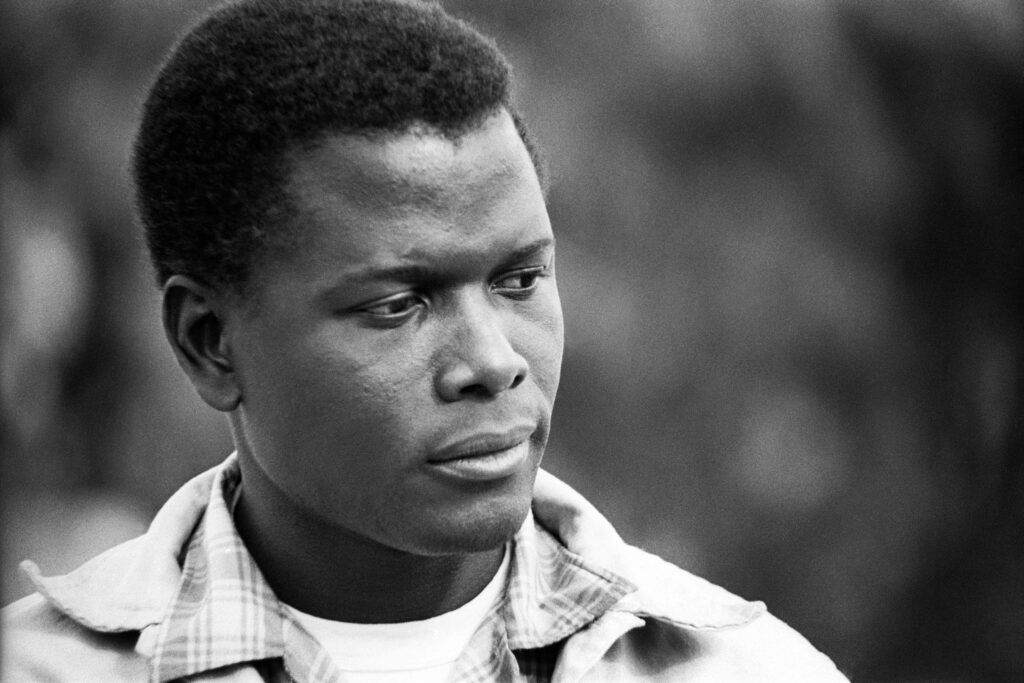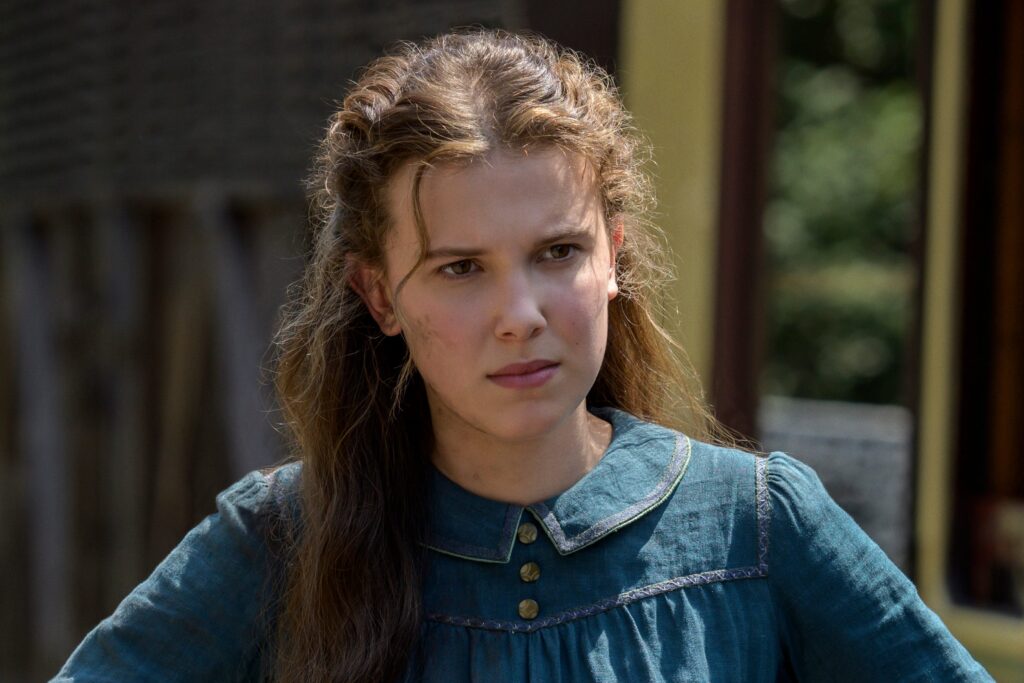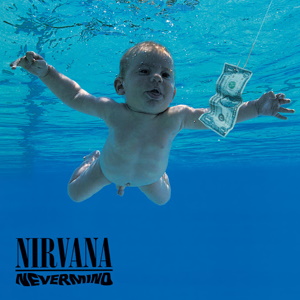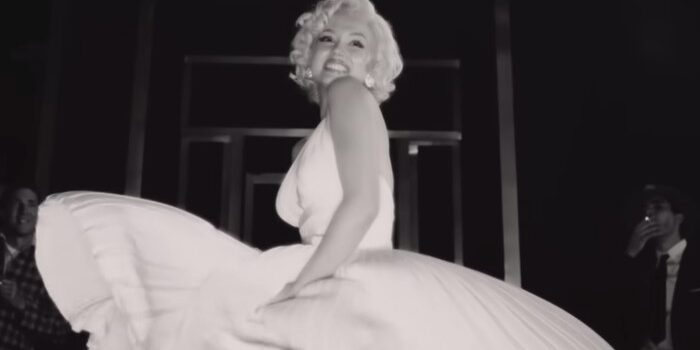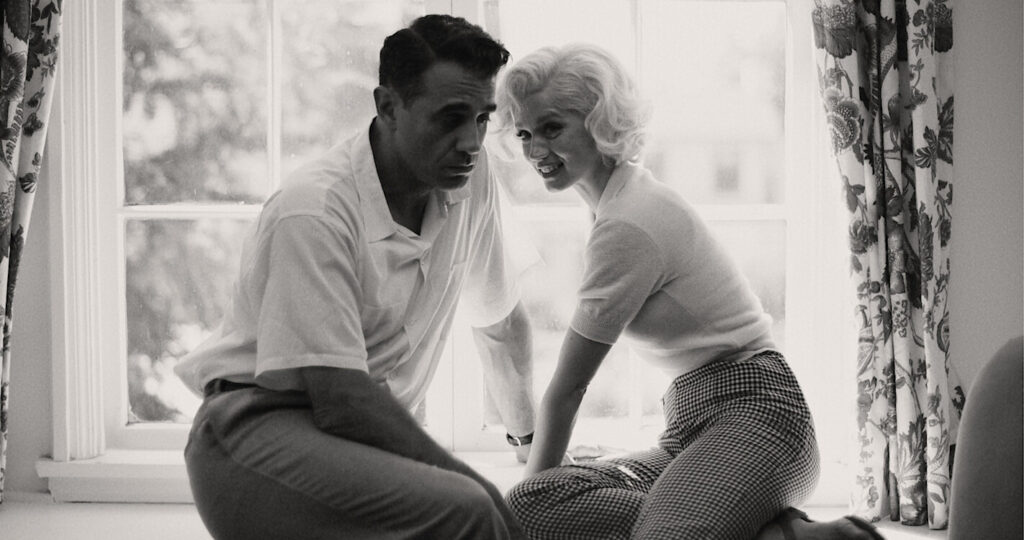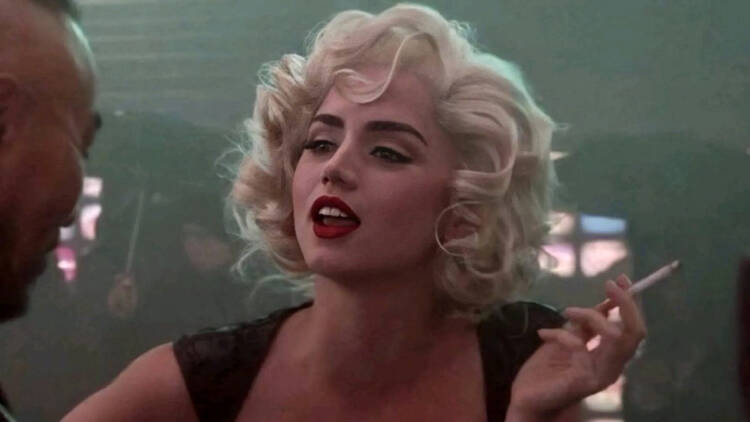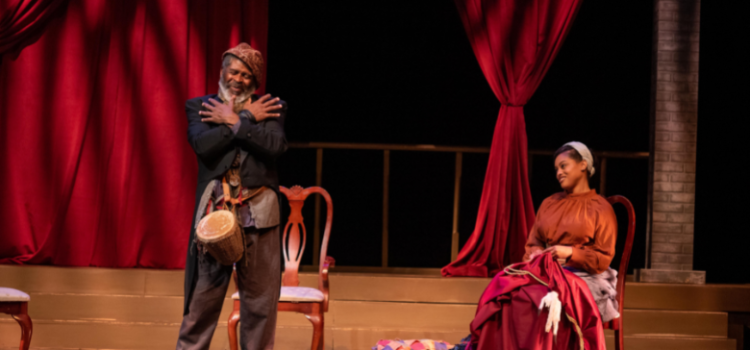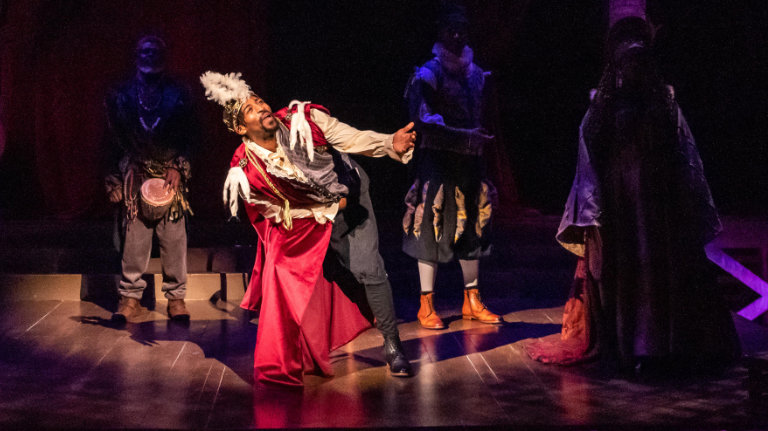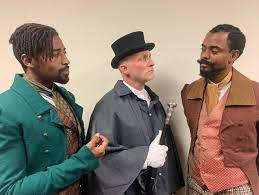By Lynn Venhaus
“I believe it’s called ‘Miser-ahh-bluh’!”
Brimming with references to many modern musicals, the spoofy, goofy “Something Rotten!” is a humdinger of a regional professional theater premiere from New Line Theatre. After all, it has an exclamation point in the title, so it must be special!
It is!
Fresh, funny, and frisky, the cast accepts their mission to have fun with the fluff, and the tight-knit ensemble is downright giddy frolicking in some of the most original show tunes in the past decade.
Besides the peppy song-and-dance numbers, the crowd-pleasing show provokes oodles of laughter and features an expertly tuned high-energy ensemble all-in with the snappy repartee and fun hijinks.
With its scaled-down setting and a smaller cast, this upbeat show flows smoothly on the Marcelle Theatre’s intimate stage. Scenic designer Rob Lippert used Shakespeare’s famous Globe Theatre as his guide, and director Scott Miller builds the action on two levels.
“Something Rotten!” opened on Broadway in 2015 and received 10 Tony Award nominations, including Best Musical, with Christian Borle winning the only one, as Best Featured Actor in a Musical as William Shakespeare. This is the regional professional premiere.
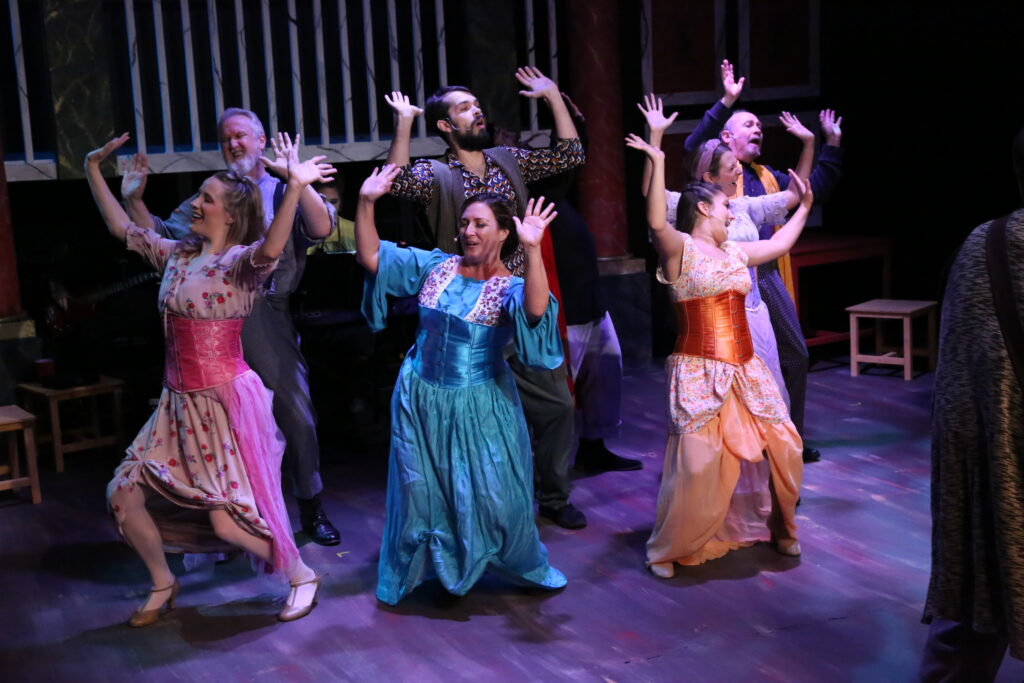
Written by Karey Kirkpatrick and John O’Farrell as both a love letter to literature and a send-up of musical comedy, it never takes itself too seriously.
Karey and brother Wayne Kirkpatrick penned a clever music score and lyrics that the New Liners deliver in a zippy and zany style that has the audience engaged at “Welcome to the Renaissance,” the opening number.
The time is 1595, and William Shakespeare is an idol-like bard. Meanwhile, brothers and playwrights Nick (Chris Kernan) and Nigel (Marshall Jennings) Bottom crave the same rock-star celebrity and fame. They are desperately in need of a hit but disaster plagues their endeavors.
Then one day, Nick listens to a soothsayer, Thomas Nostradamus (not THE Nostradamus, but his neophyte nephew), who predicts that musicals will be the next big thing.
When Nostradamus guesses Shakespeare’s next hit will be “Omelette,” wackiness then ensues.
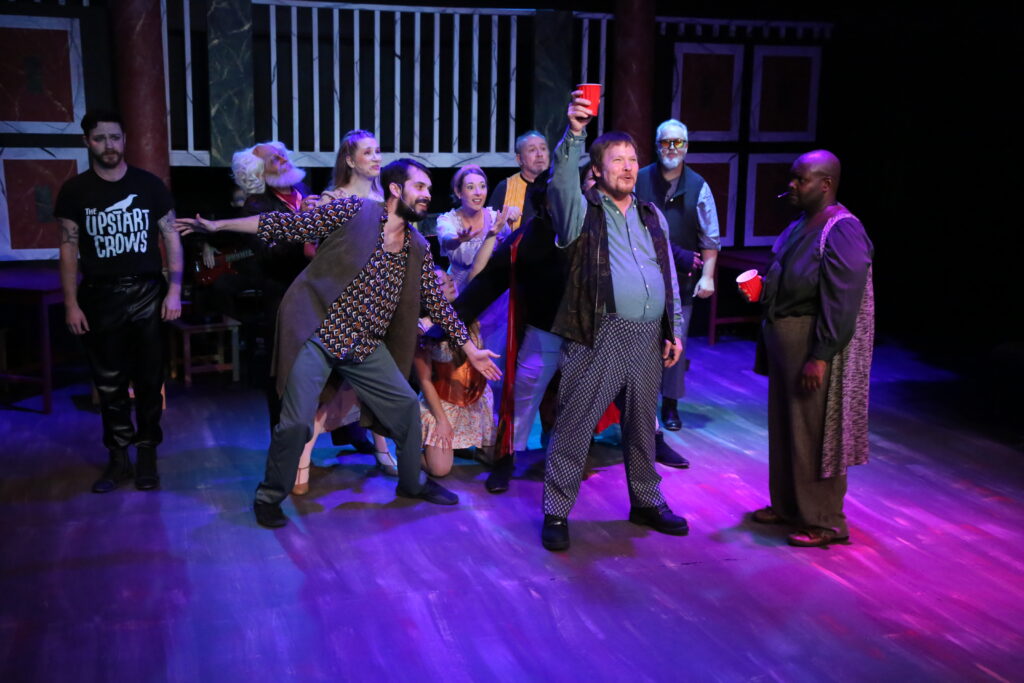
The book’s cheeky wit comes through when principals engage in wordplay and display their sterling comic timing. It’s as if everyone is winking while they are smiling.
As the downtrodden Nick, Kernan confidently leads the ensemble. A versatile performer, he delivers “God, I Hate Shakespeare” and “Bottom’s Gonna Be on Top” with aplomb and “Make an Omelette!” showcases his character’s despair and stubbornness.
An ebullient Jennings, as the talented but shy brother Nigel, works well with Kernan, and they deftly land the theater-insider quips. When conflicts arise, their clash is believable.
Jennings and Melissa Felps are a charming romantic pair. As the Puritan lass Portia, Felps is radiant, and their strong voices soar in the ballads, blending beautifully in “I Love the Way” and are bouncy in “We See the Light.”
Jason Blackburn is comical, delivering double-entendres as Portia’s overbearing, religious zealot father Brother Jeremiah, who does not approve of his daughter’s relationship.
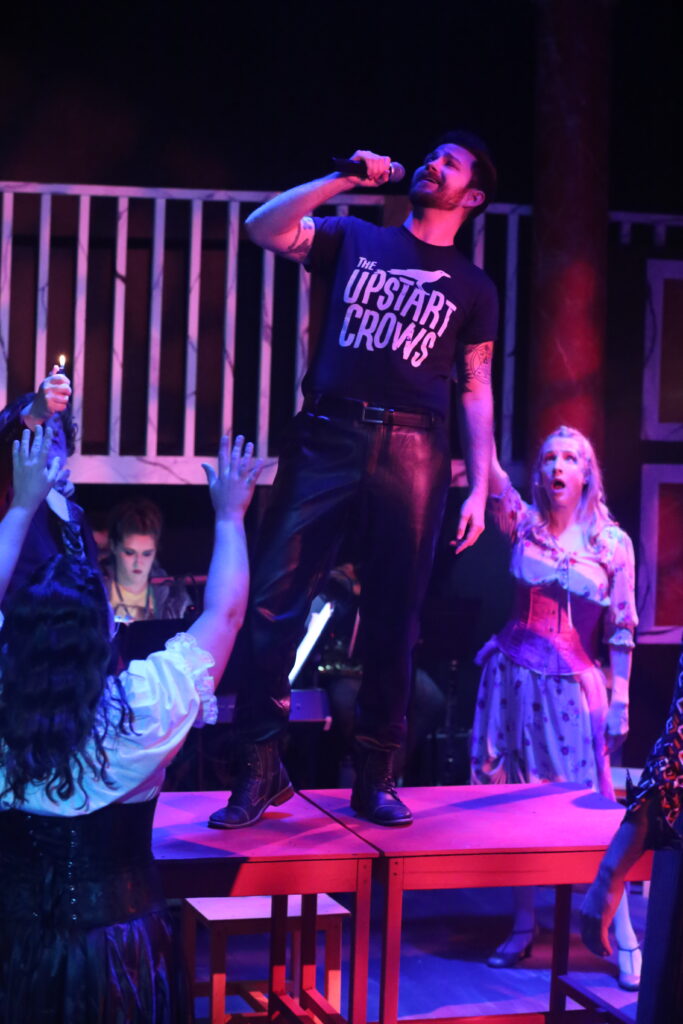
In one of his best performances, Clayton Humburg swaggers like a rock star as the egomaniac Shakespeare, encapsulating all the preening cliches in his “Will Power” introduction and has fun with the sly references. He’s amusing in his lament, “Hard to Be the Bard.”
Carrie Wenos uses both her comedic and vocal skills as Nick’s supportive wife Bea, a burgeoning feminist, and has fun with “Right Hand Man.”
And as Nostradamus – not “THE” soothsayer but his nephew Thomas – Jeffrey Izquierdo-Malon has a daffy debut that’s part Monty Python, part Marx Brothers.
The merry ensemble – Robert Doyle as Shylock and Lord Clapham, Chris Moore as a Minstrel and Peter Quince, Mara Bollini as Francis Flute, Kent Coffel as Robin Starveling, Brittany Kohl Hester as John Snug, Ian McCreary as Tom Snout, Maggie Nold as Helena and a psychic, and Alyssa Wolf as Miranda and an astrologer — are plugged into presenting the low-brow Mel Brooks’ type humor as well as the ‘higher brow’ theatrical and Shakespearean jokes.
Music Director Mallory Golden capably conducts band members Joe Akers on trumpet, Jack Catalanotto on guitar, John Gerdes on bass, Joe Hendricks on reeds and Des Jones on percussion while she plays keyboards. The band is strategically placed under the balcony.
Sarah Porter’s playful costume design allows the performers to move while wearing such period attire as puffy pants and petticoats.
Ryan Day’s sound design and Matt Stuckel’s lighting design seamlessly enhance the action.
Choreographer Alyssa Wolf’s crisp and snappy dance routines really shine, but the standout is “A Musical,” a hilarious pastiche of Broadway hits. “It’s Eggs!” is a rib-tickler too.
By the time the show wraps up with a reprise of “To Thine Own Self” and “Welcome to America,” your sides may ache from laughing and you may notice you have been grinning for over two hours.
“Something Rotten!” is a must-see comedic gem, a well-cast, well-staged show that’s a bright spot in local theater this fall.
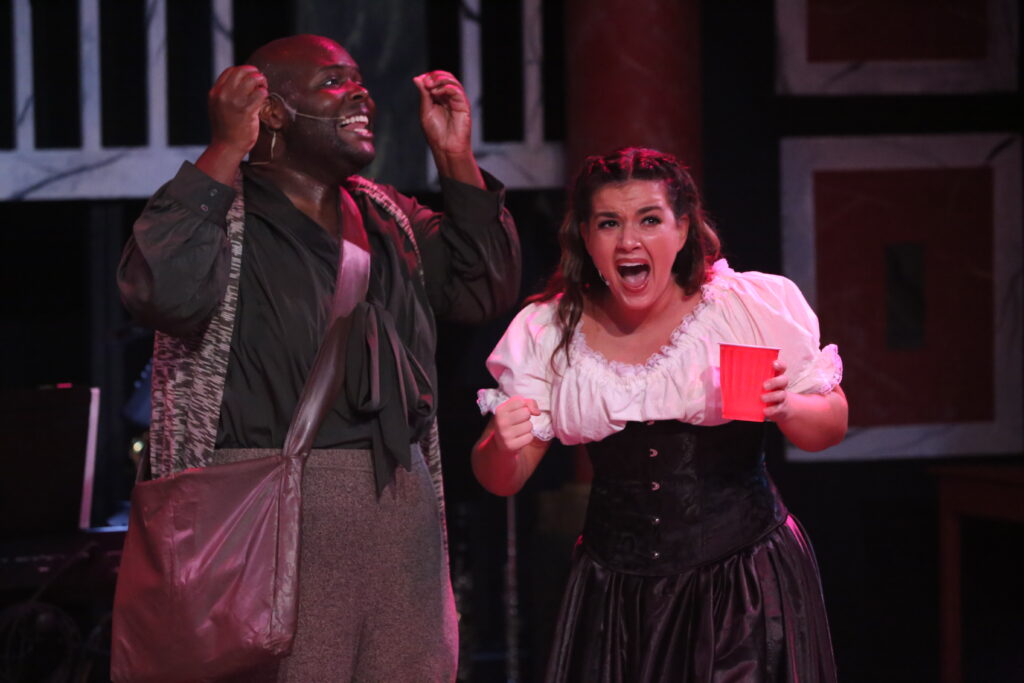
New Line Theatre presents “Something Rotten!” from Sept. 23 through Oct. 15, at 8 p.m. Thursdays through Saturdays, at The Marcelle Theatre, 3310 Samuel Shepard Drive, in the Grand Arts District. For more information, visit www.newlinetheatre.com
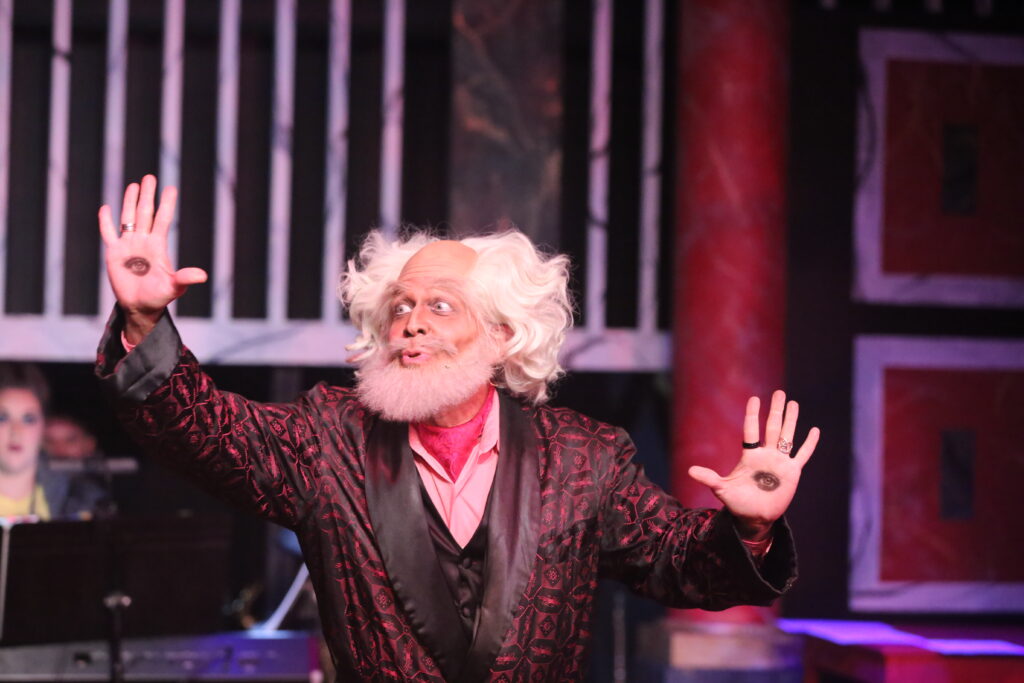

Lynn (Zipfel) Venhaus has had a continuous byline in St. Louis metro region publications since 1978. She writes features and news for Belleville News-Democrat and contributes to St. Louis magazine and other publications.
She is a Rotten Tomatoes-approved film critic, currently reviews films for Webster-Kirkwood Times and KTRS Radio, covers entertainment for PopLifeSTL.com and co-hosts podcast PopLifeSTL.com…Presents.
She is a member of Critics Choice Association, where she serves on the women’s and marketing committees; Alliance of Women Film Journalists; and on the board of the St. Louis Film Critics Association. She is a founding and board member of the St. Louis Theater Circle.
She is retired from teaching journalism/media as an adjunct college instructor.

